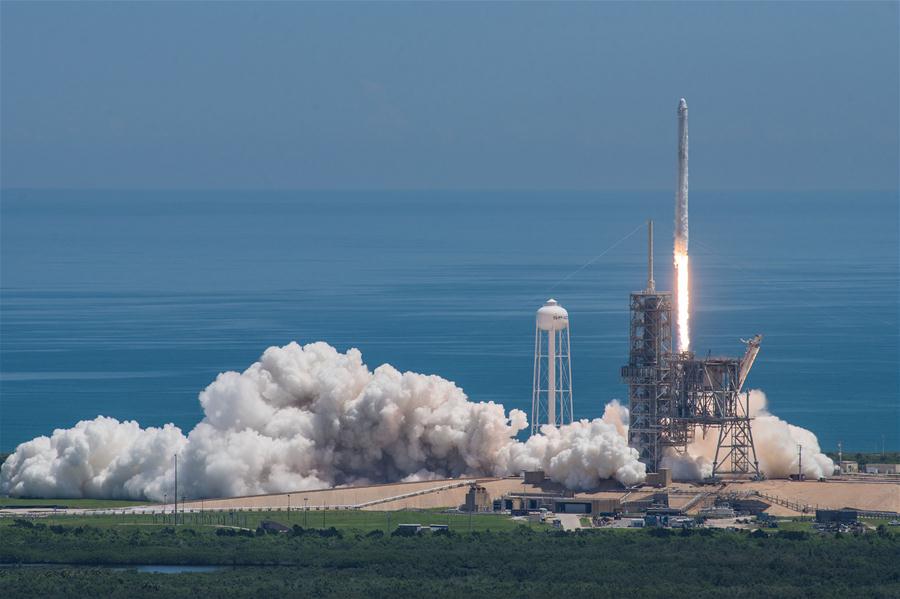


The photo released by SpaceX on Aug. 14, 2017 shows Falcon 9 rocket, with the Dragon spacecraft sitting on the top, launching at NASA's Kennedy Space Center in Florida, the United States. A SpaceX Falcon 9 rocket lifted off from Florida on Monday, sending the U.S. space firm's last new first-generation Dragon cargo ship to the International Space Station. The Falcon 9 rocket, with the Dragon spacecraft sitting on the top, blasted off from a launch pad at NASA's Kennedy Space Center at 12:31 p.m. EDT (1631 GMT), according to a live webcast by the U.S. space agency NASA. (Xinhua)
A SpaceX Falcon 9 rocket lifted off from Florida on Monday, sending the U.S. space firm's last new first-generation Dragon cargo ship to the International Space Station.
The Falcon 9 rocket, with the Dragon spacecraft sitting on the top, blasted off from a launch pad at NASA's Kennedy Space Center at 12:31 p.m. EDT (1631 GMT), according to a live webcast by the U.S. space agency NASA.
About eight minutes later, SpaceX successfully landed the rocket's first stage at the company's Landing Zone 1, just south of the launch site at Cape Canaveral Air Force Station, as part of its effort to develop fully reusable rockets.
Previously, SpaceX has successfully recovered 13 first stages, five on land and eight at sea.
Monday's flight was the 12th of up to 20 missions to the space station that SpaceX will fly for NASA under a multi-year commercial resupply services (CRS) contract.
And it also marked the last time SpaceX launches a brand-new Dragon 1 vehicle and the remaining CRS missions will fly only reused ones, an official from SpaceX said at a pre-launched news conference on Sunday.
A variant of the Dragon spacecraft, called Dragon 2, is currying being developed for U.S.-based crew transport to and from the space station, the company said.
For this mission, Dragon was filled with over 6,400 pounds (2,900 kilograms) of supplies and payloads, including critical materials to directly support dozens of the more than 250 science and research investigations that will occur during the next six months.
"I'm happy to say 75 percent of that total mass is headed toward our research community," Dan Hartman, deputy manager of NASA's space station program, said at Sunday's news conference "It sets a new bar for the amount of research that we've been able to get on the flight."
A biology experiment will use the orbiting laboratory's microgravity environment to grow an important protein, LRRK2, which is believed to be greatest genetic contributor to Parkinson's disease.
Another experiment will test strategies for growing new lung tissue from stem cells, with the ultimate goal of producing bioengineered human lung tissue to help better understand organ rejection.
Also aboard the Dragon was an investigation that aims to validate the concept of using microsatellites in low-Earth orbit to support critical operations, such as providing lower-cost Earth imagery in situations such as tracking severe weather and detecting natural disasters.
In addition, the cargo included a Hewlett Packard Enterprise supercomputer, which is part of a year-long experiment to test how a system like this would operate in deep space for about a year, which is roughly the length of time needed to travel to Mars.
If everything goes well, the Dragon spacecraft will arrive at the space station Wednesday, where it is expected to stay for about one month.
Then, in mid-September, the spacecraft will return to Earth with results of earlier experiments, splashing down in the Pacific Ocean off the coast of Baja California.